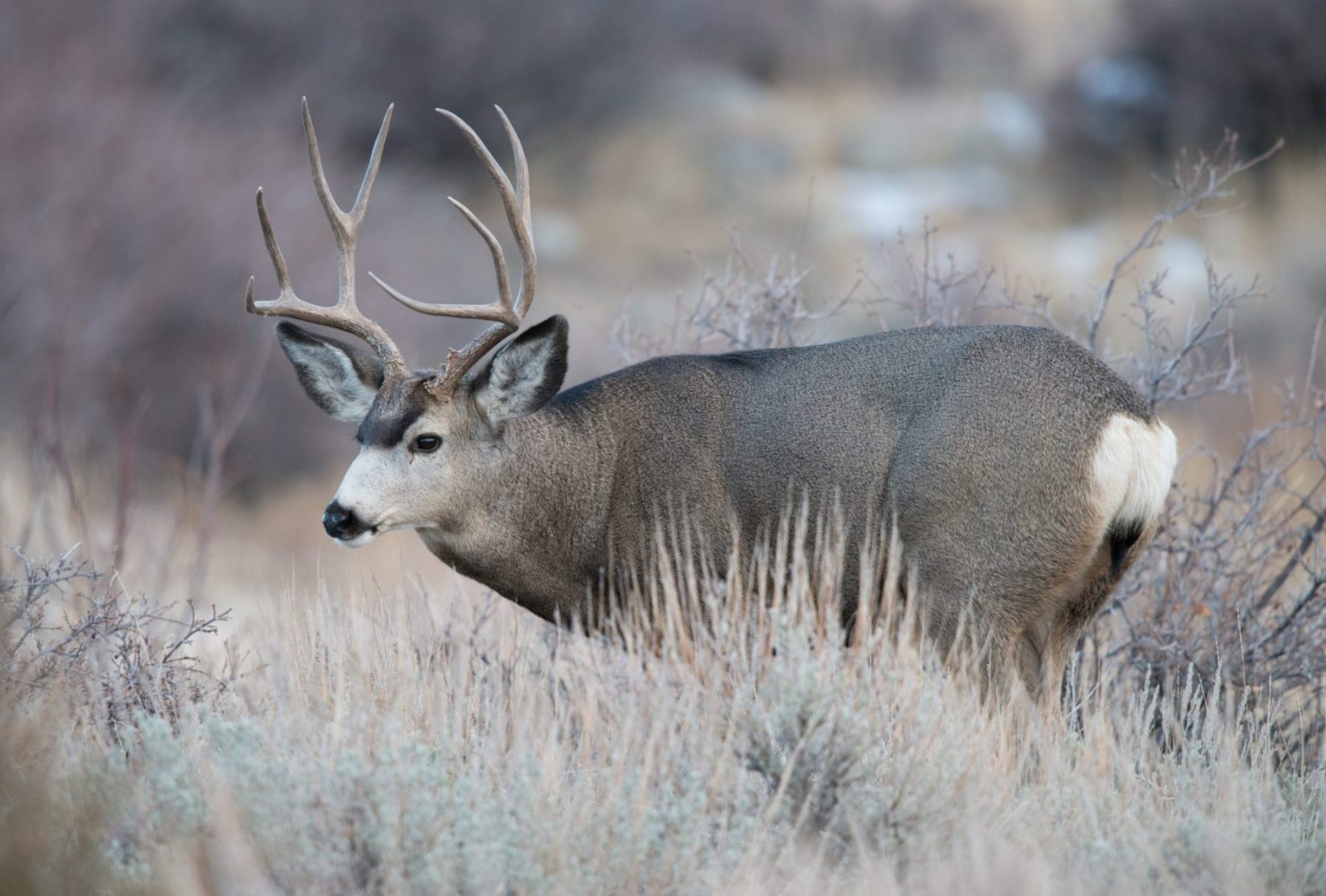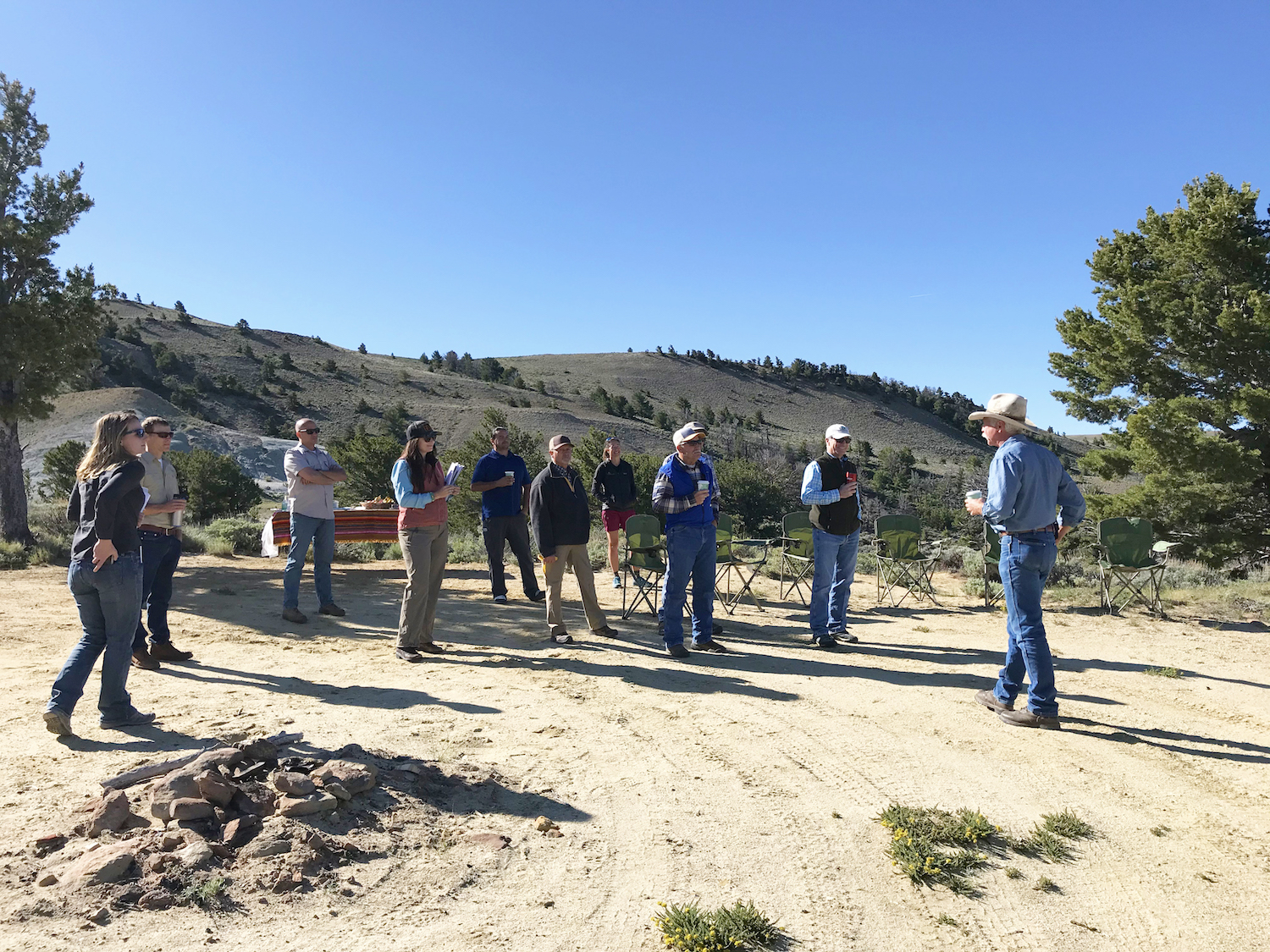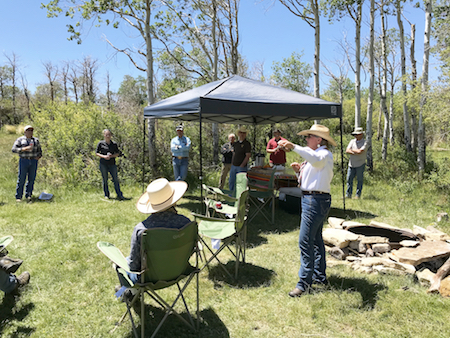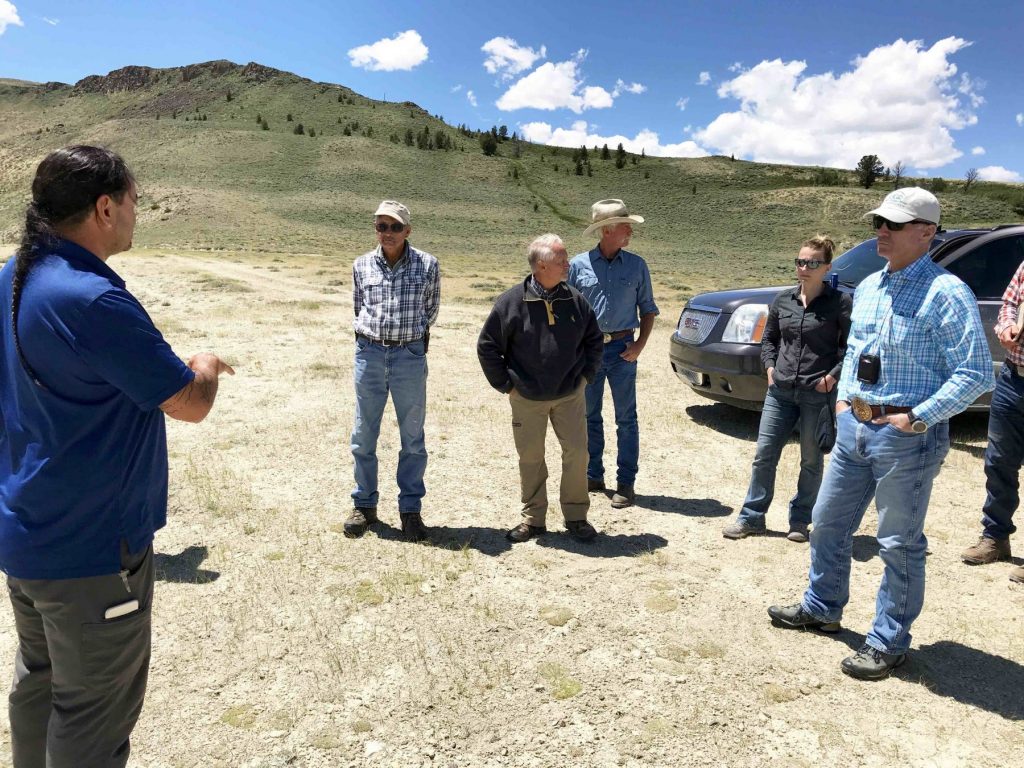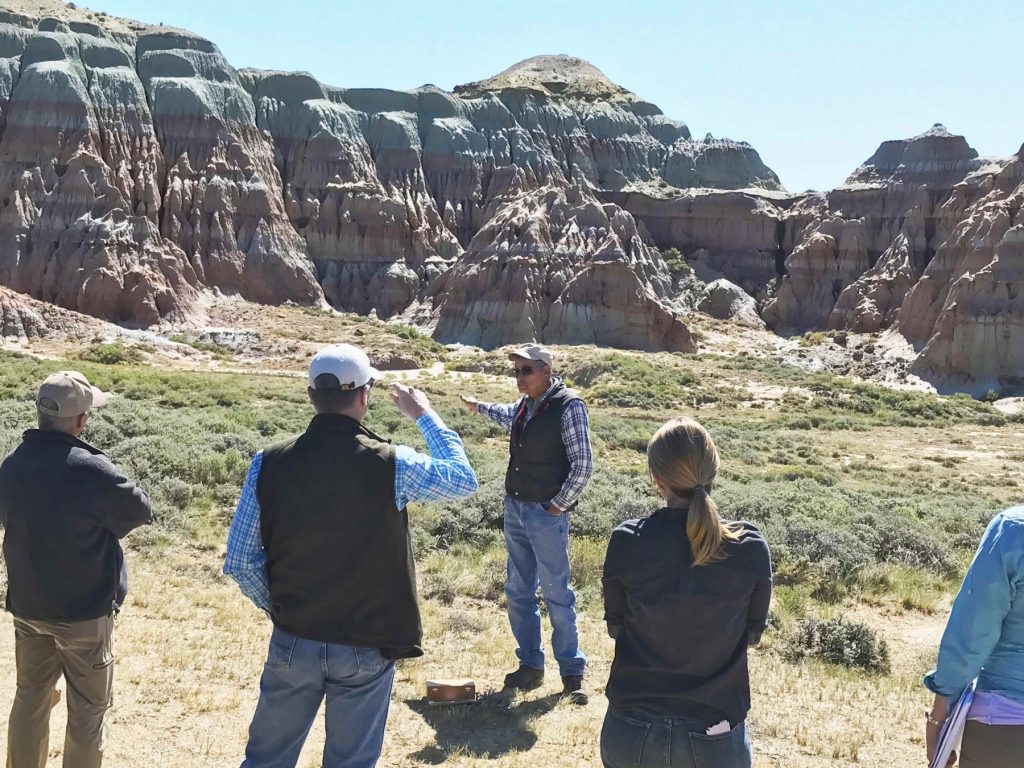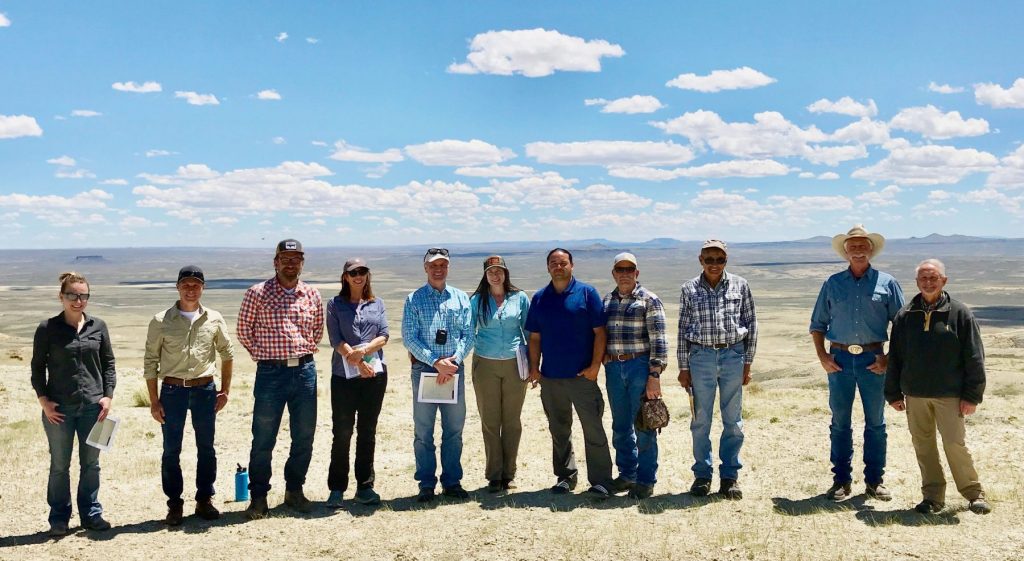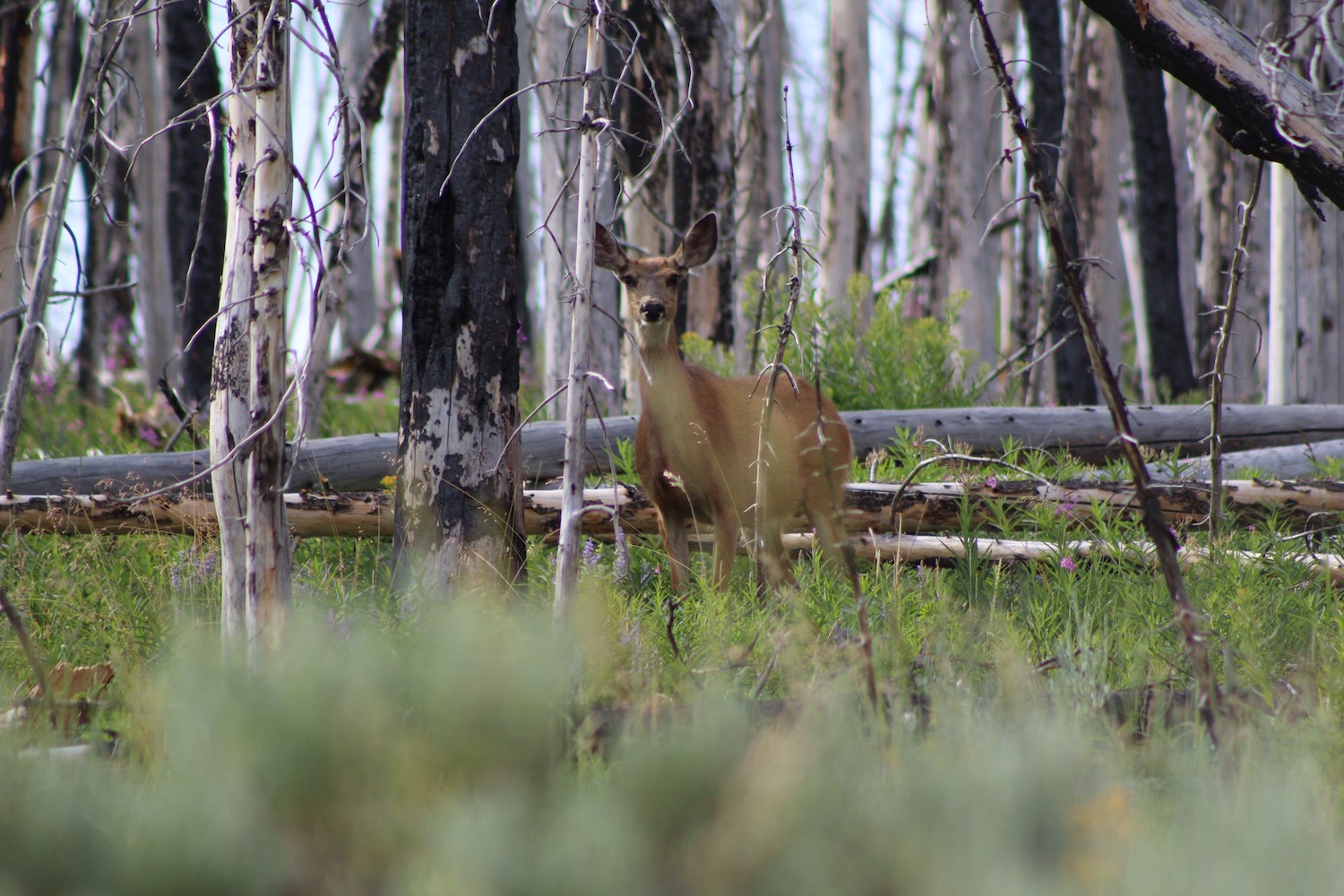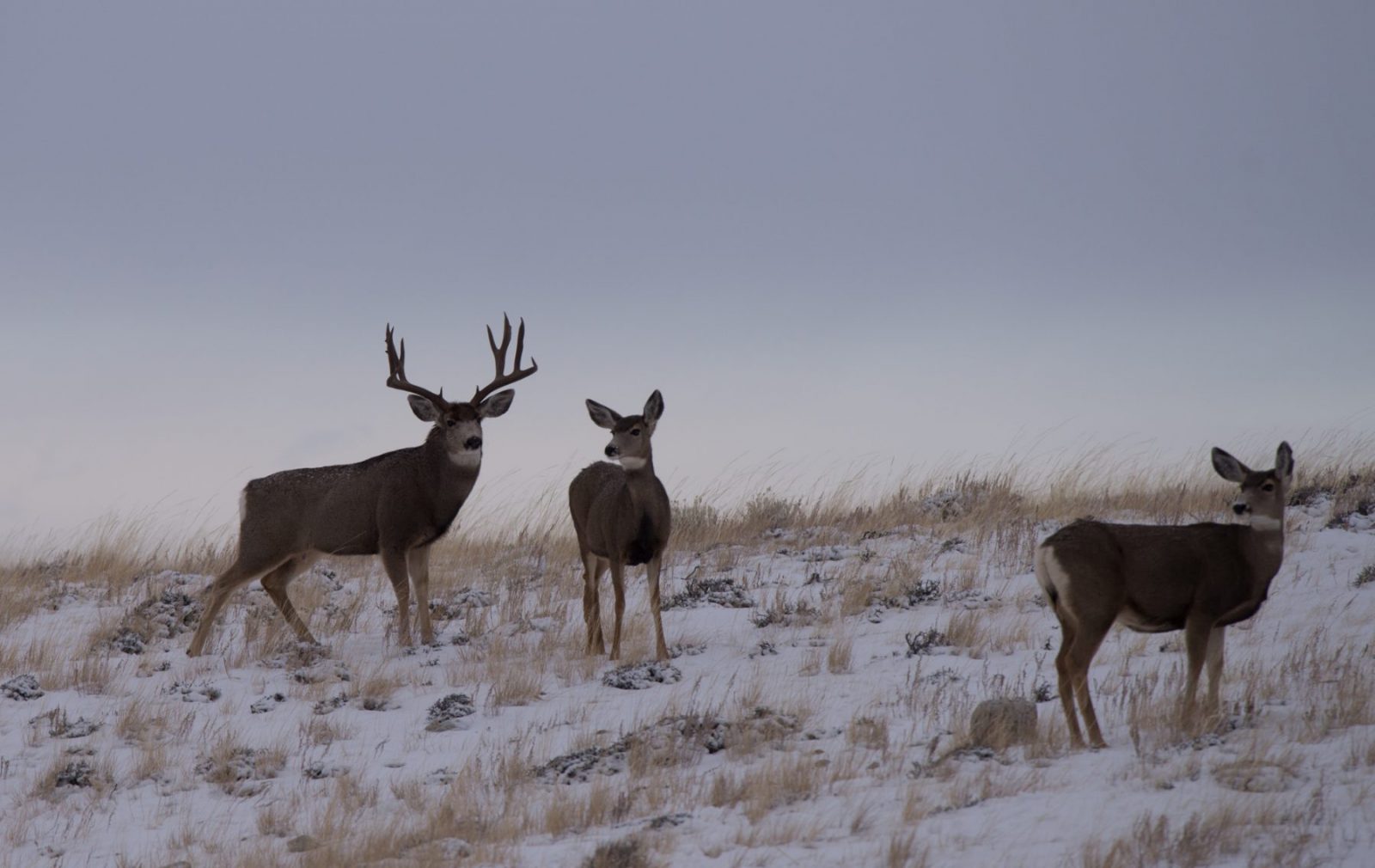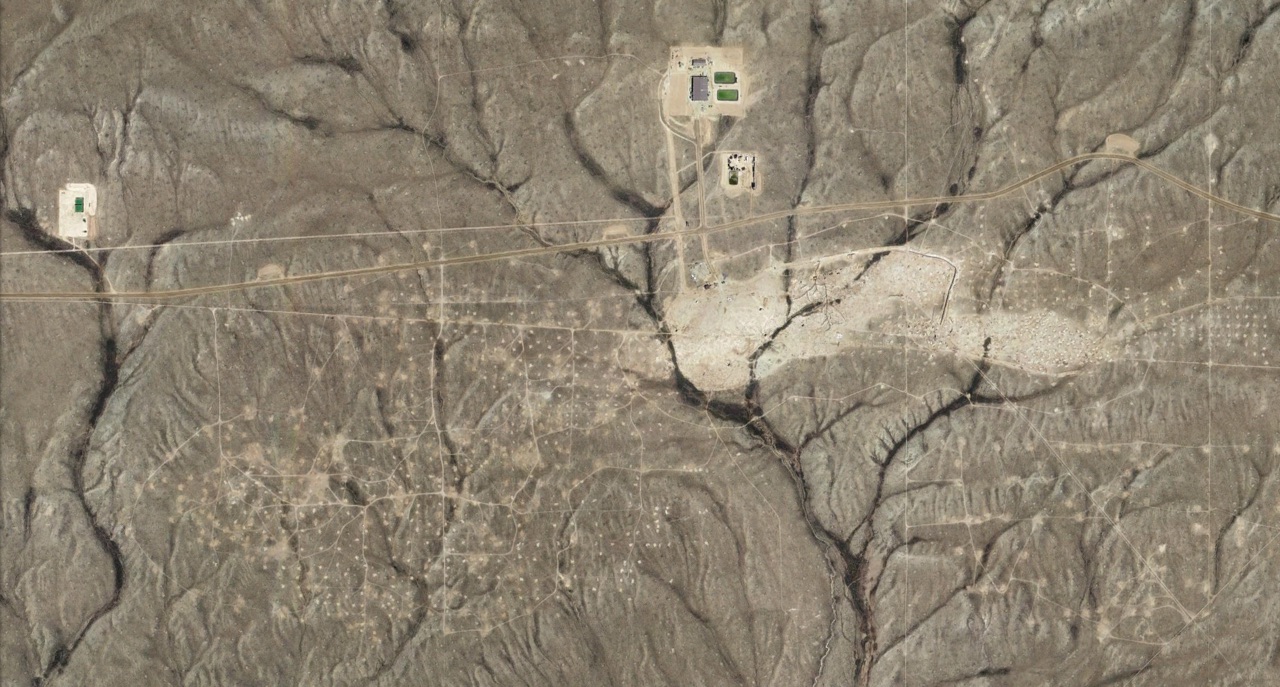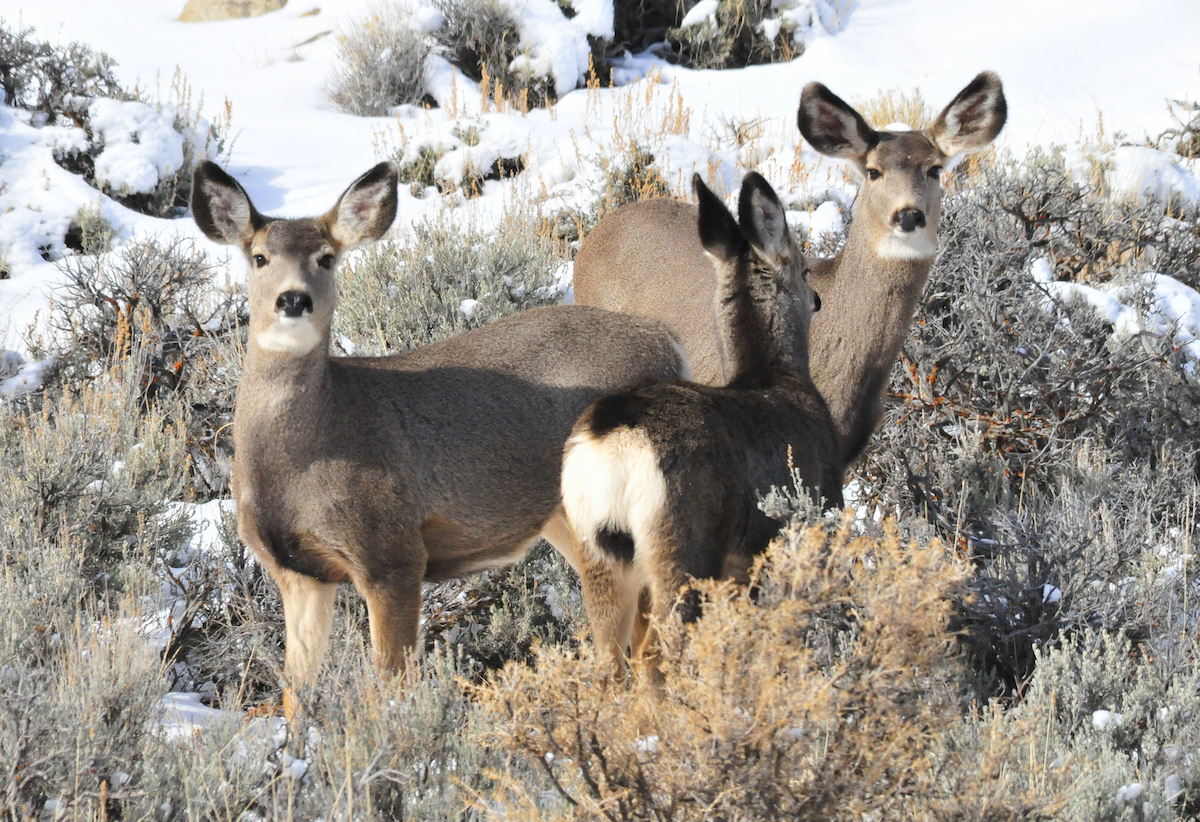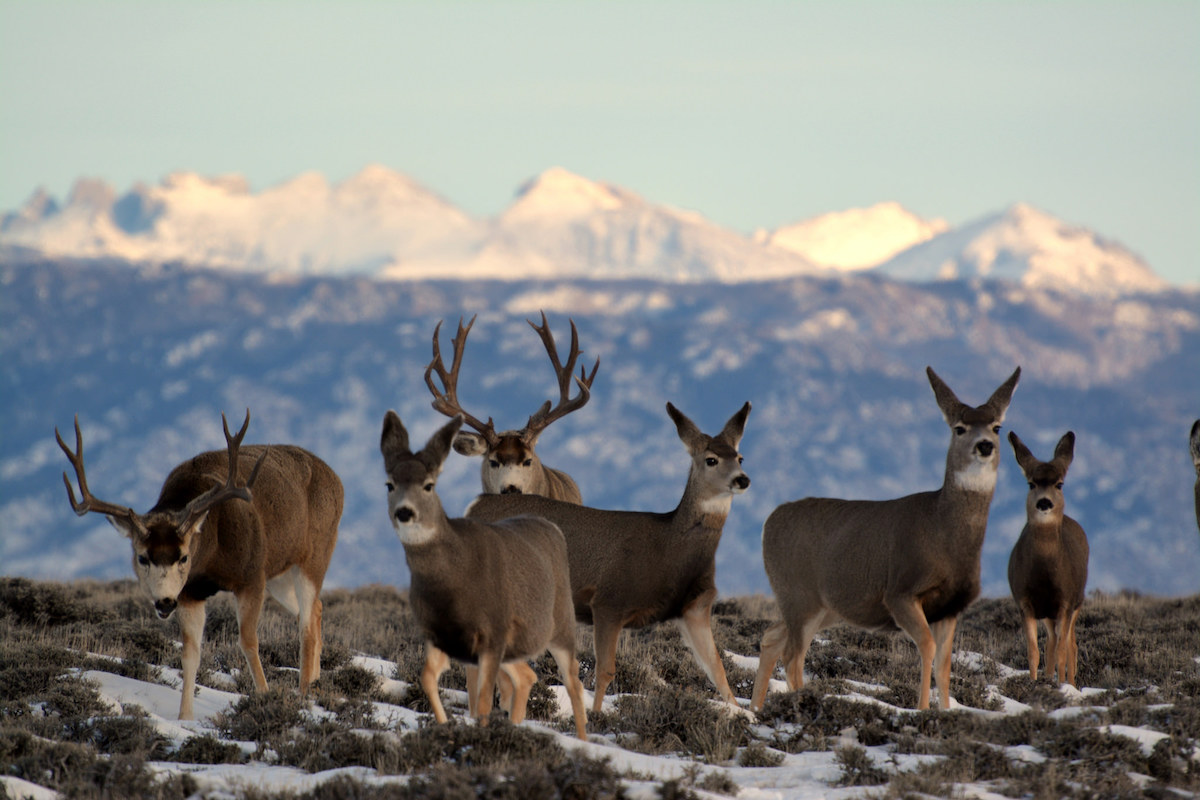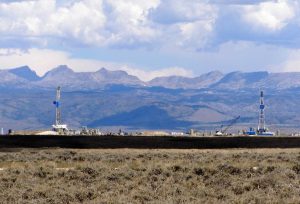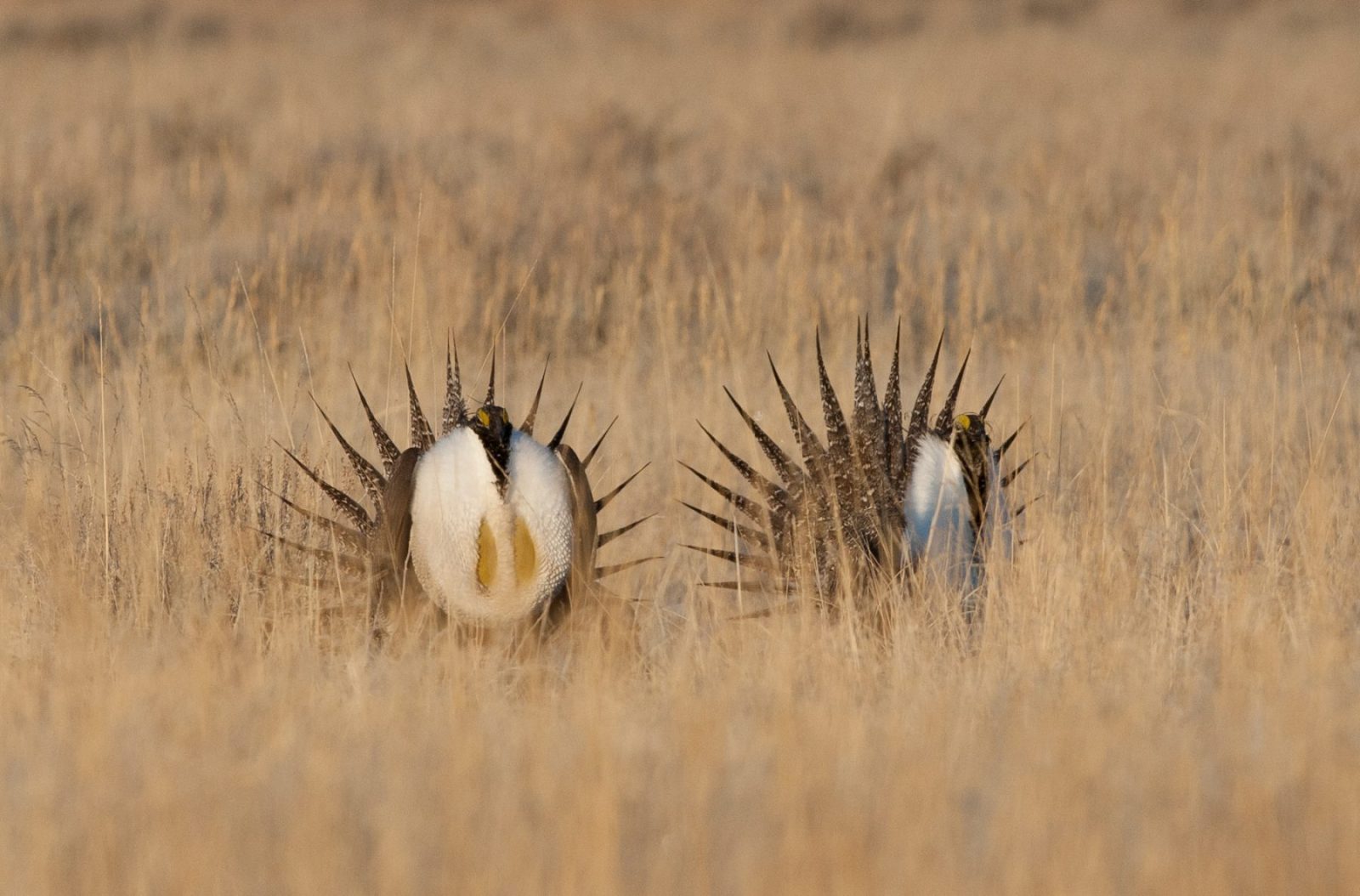It took nearly 10 years for western states and the federal government to agree on a plan to save the imperiled Greater sage-grouse — along with the health of the sagebrush ecosystem that it relies on. Yet the actual work of implementing the plan and testing its potential for success has only just begun.
That’s why the Wyoming Outdoor Council is closely examining plans to expand uranium mining in prime sage-grouse habitat in the remote Great Divide Basin in south-central Wyoming. Recent mining activities here have already “moderately” degraded the habitat, and a proposal to expand the mining operation would nearly double the area already disturbed.
In its eight-volume review of the proposed expansion, the U.S. Bureau of Land Management concludes that the mine’s increased degradation of prime sage-grouse habitat is acceptable and falls within the legal parameters of its own sage-grouse management plan. WOC staff disagrees.
“The BLM has not lived up to its own commitments,” Outdoor Council Conservation Advocate John Rader said. “They misapplied their own density calculation tool to suggest a smaller surface disturbance than the actual disturbance, they incorrectly assessed baseline noise levels, and they barely mention the cumulative impacts of the proposed expansion. They claim to make up for ongoing and future damages with an ‘adaptive management plan,’ yet no adaptive management plan exists.”
Rader said that carefully scrutinizing the BLM’s draft environmental impact statement for the Lost Creek mine expansion provides an important opportunity to improve not just this project, but the implementation of Greater sage-grouse management plans more broadly. Holding industry and permitting agencies accountable at Lost Creek will help ensure that standards and expectations are met in sage-grouse country around Wyoming.
“Essentially, this is an opportunity to test the larger effort to save the Greater sage-grouse,” Rader said.
A full accounting for surface disturbance
The Lost Creek in-situ uranium mine 40 miles northwest of Rawlins consists of a series of small wells that tap into a shallow formation containing uranium ore. A solution of mostly carbonated water is pumped into the formation to dissolve the metal, and pumped back to the surface where metals are recovered in a treatment facility.
The proposed mining expansion would nearly double the size of the project area to 10,000 acres — all inside an area known as a BLM Priority Habitat Management Area. That means the mine operates within one of Wyoming’s protected sage-grouse “core areas” — important nesting, breeding, and lekking habitat that’s vital to the bird’s health. As such, the BLM must apply several prescriptions to limit damage to the bird and its habitat.
One key stipulation that applies here is how much surface inside a sage-grouse core area is allowed to be disturbed at any one time. New development activities may not disturb more than 5 percent of suitable habitat per an average of 640 acres. To calculate this, officials use a “Density and Disturbance Calculation Tool.” The formula requires BLM to consider disturbed sage-grouse habitat, even outside of the project’s footprint.
However, Rader and other Outdoor Council staff discovered that the BLM didn’t do this. The agency misapplied the formula by not accounting for areas between actual wells, roads, and other new structures. Yet science shows that because these physical structures and roadways fragment the habitat, impacts to the species go beyond just where the infrastructure sits. If the BLM’s measurement tool had been correctly applied to include the in-between acreage, it is likely that surface disturbance would have exceeded the 5 percent threshold, Rader said. He also noted this in the Outdoor Council’s comments to BLM Rawlins Field Office.
We want the BLM to correctly apply its own formula for determining how much surface area may be disturbed by mining operations at Lost Creek. Getting it right here will help ensure it’s done right across all critical sage-grouse habitat in Wyoming and the West.
Setting the bar for noise and cumulative impacts
Our review of the BLM’s Lost Creek mine expansion proposal also revealed flaws in how baseline noise levels are measured. And we found that cumulative impacts (such as the loss, alteration, and fragmentation of habitat, and various stresses of industrial activity) were not accounted for — a troubling omission.
Human-caused noise and activity may reduce lek attendance, which can harm sage-grouse. Therefore, another key stipulation requires that no development activity exceeding 10 decibels above an area’s baseline noise level is allowed at the perimeter of a lek from 6 p.m. to 8 a.m. during the spring breeding season. But the BLM’s flawed calculation of baseline noise levels grossly underestimated potential impacts, Rader said, and would allow for potentially harmful noise levels during the lek season.
Rader also noted that there’s too much variation in equipment used to measure ambient baseline noise, and too much variation in how the equipment is placed during testing. For example, sometimes microphones were placed much higher than a sage-grouse’s ears, allowing for more wind noise.
Based on ambient noise studies and the negative effects of noise on sage-grouse in Wyoming, we suggested that a clearer protocol be developed for establishing background noise levels and for monitoring. This is something that industry has also requested, noting that it would help avoid confusion and ensure clarity. We also suggested a statewide presumption of background noise levels based on peer-reviewed studies in sagebrush habitat in Wyoming, and recommended ensuring that human-caused noise levels do not exceed 26 decibels during lekking hours.
This presumption would decrease cost to industry by eliminating the need for baseline measurements, and reduce the risk of inaccurate measurements from flawed studies.
The BLM’s draft environmental impact statement for the Lost Creek mine expansion is troubling not only for its flawed analysis, but also for its failure to address cumulative impacts.
The BLM’s cursory evaluation — just two sentences — addressing the compounding effects of habitat fragmentation and other human-caused stresses associated with the mine’s activities risks weakening the broader, multi-state effort to protect the Greater sage-grouse. Curiously, the BLM defends these flaws by stating that any negative impacts to the bird and its habitat would be addressed in its Adaptive Management Plan for the project. But no such adaptive plan exists.
Why it matters, and what we’re doing
This project is not just about the habitat near Lost Creek. As we see opportunities for public input on these admittedly complicated processes diminish, it’s more important than ever to hold industry and permitting agencies accountable for protecting the Greater sage-grouse throughout sagebrush country. Agreeing on and using a clear set of science-based management prescriptions is necessary to ensure that mining, drilling, and other activities don’t further harm the species’ habitat.
“The sage-grouse management plans are more than a set of documents,” Rader said. “The bird is still in peril, and we must ensure that science-based plans are put into practice. State and federal permitting authorities are obligated to make sure they are properly measuring impacts and accounting for protections to avoid decimating some of the last best habitat that plays a major role in the survival of the species. That’s what we’re doing at Lost Creek.”



